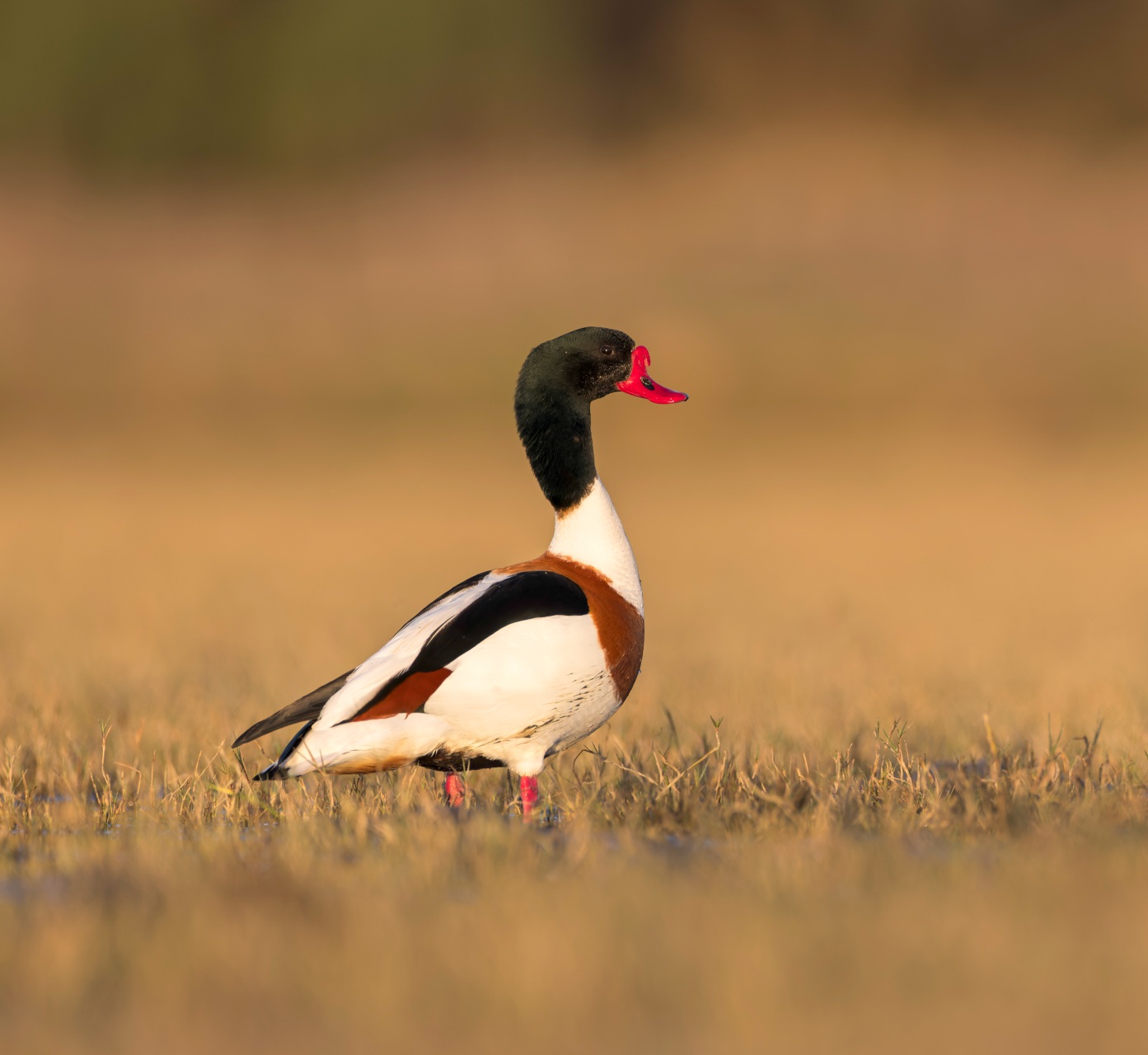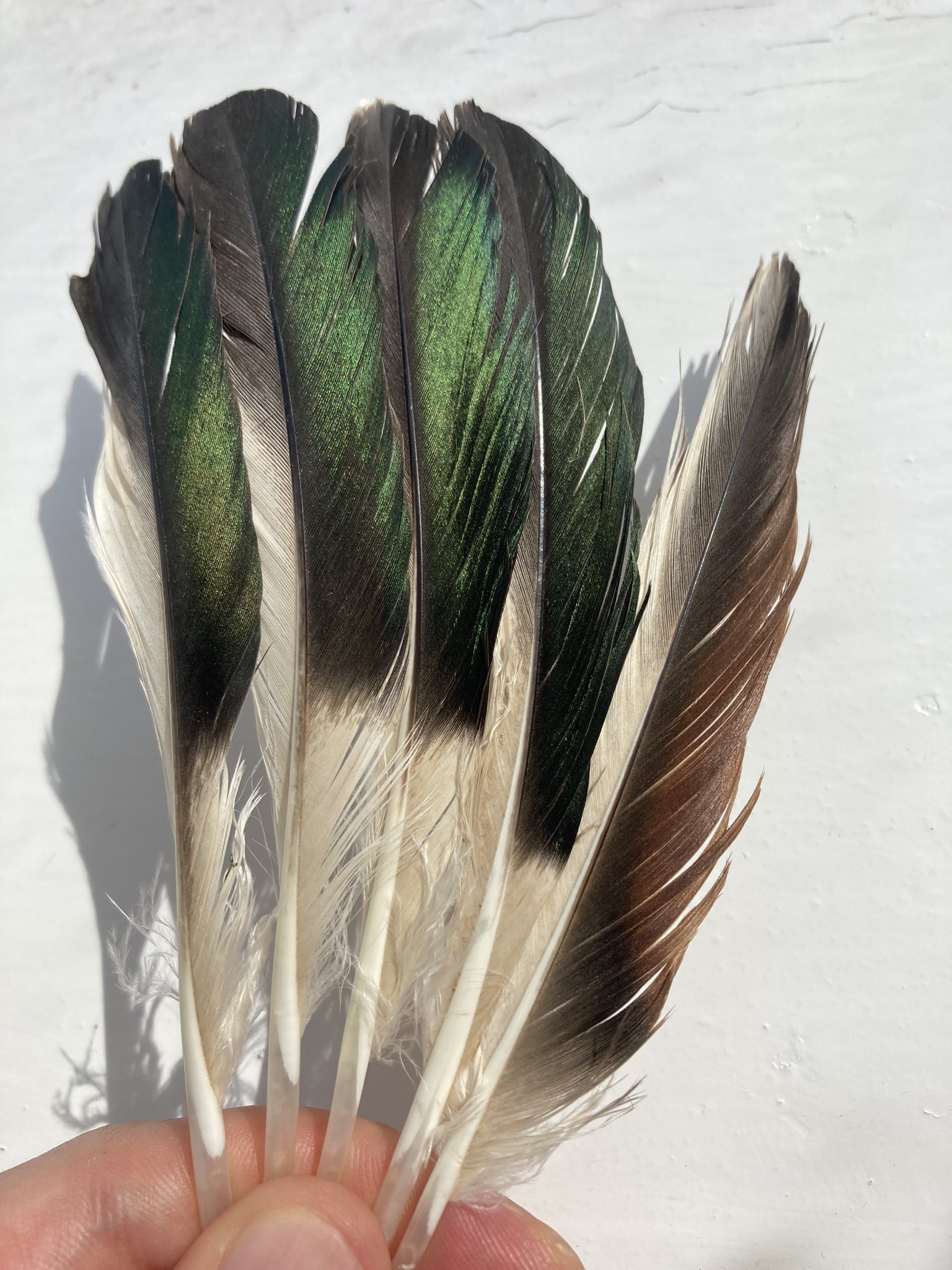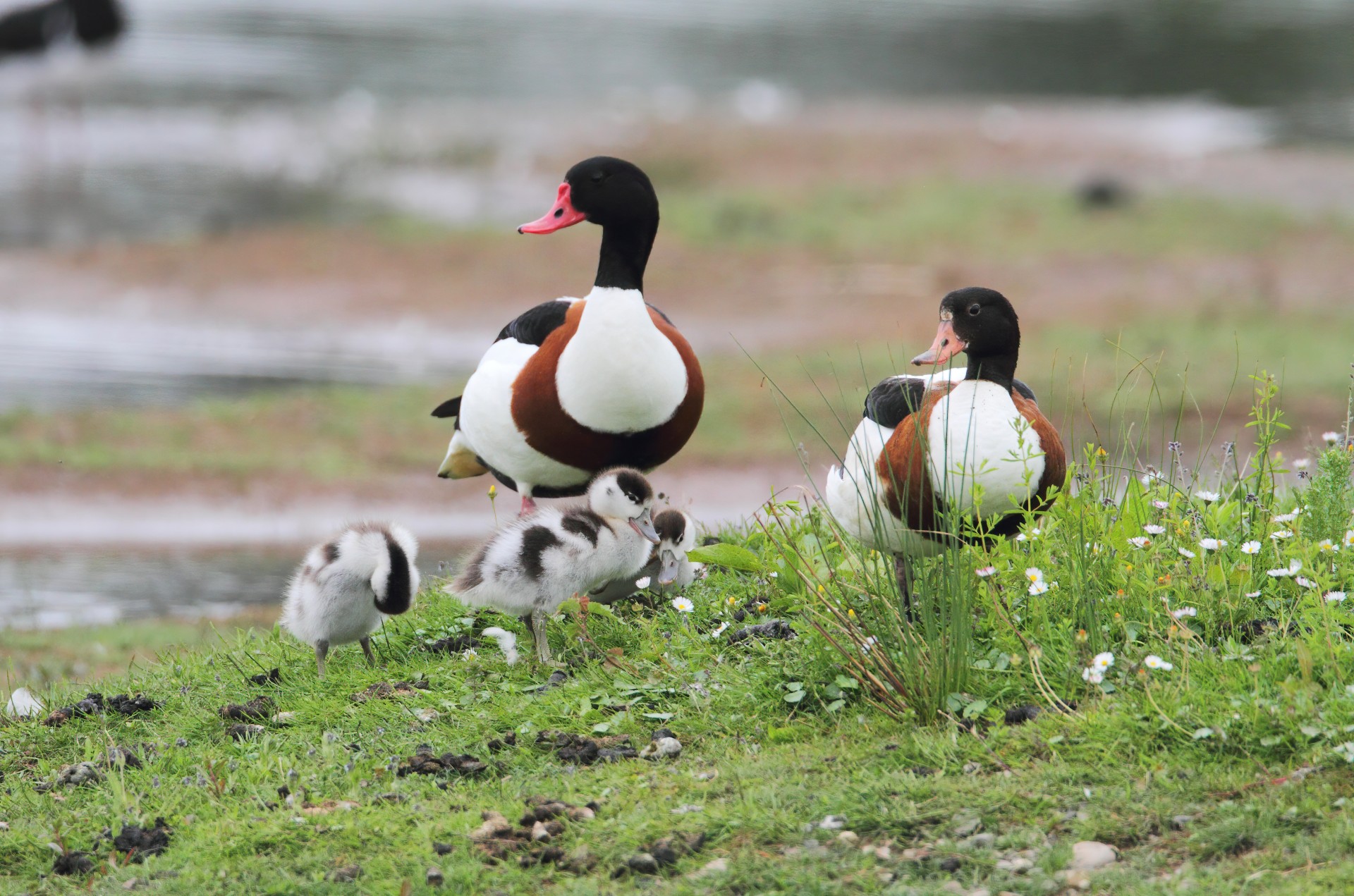Compared to most avian groups that breed and/or winter in the UK, we know comparatively little about the ecology and phenology of Common Shelduck. There was a research interest in the species between the 1950s and 1980s, when it was discovered that the majority of the UK population conducted an annual moult migration to the German Wadden Sea. Ian Patterson's monograph on the species in 1982 brought all this knowledge together, but almost nothing has been published since.
Shelduck stronghold
Common Shelduck can be found across Europe, Asia and North Africa, between the Arctic Circle and Tropic of Cancer. There are five recognised populations, totalling about half a million mature individuals, and the population appears to be increasing. UK birds are part of the north-west European population, with the UK, The Netherlands and Germany as the resident strongholds, but with breeders and winterers found from Iceland and Scandinavia to France and Ireland. This is the largest population, numbering around 300,000 individuals.

Common Shelduck is a familiar coastal bird in much of Britain (Rafael Armada).
Common Shelduck nest in holes between April and June. They incubate between eight and 10 eggs, but egg-dumped clutches of more than 27 have been recorded. Once the eggs hatch, the pair marches its brood to estuarine environments with plentiful mud and brackish water. This journey can cover tens of kilometres as the parents move from breeding sites in haystacks, nestboxes or rabbit warrens, or under buildings or trees, to lakes, canals and rivers, before making their way to the coast. If the brood survives this perilous journey and reaches the comparative safety and food abundance of an estuary, then it's thought that they spend the rest of their first year 'crecheing' with other shelducklings, learning how to be a coastal duck and exploring other estuaries within their range.
The final challenge of their first year is the moult migration. The research last century showed that shelduck don't perform the classical spring and autumn migrations between breeding and non-breeding sites like most migrant birds. Instead they migrate in summer – from mid-June to early August – to large estuaries to moult before moving on to wintering sites, which may or may not be near their breeding areas. This moult can be described as 'catastrophic' because it involves the birds dropping and regrowing all their flight and tail feathers simultaneously – an energetically costly process that leaves the birds flightless and highly vulnerable for a month. If the immature duck can make it through this moult migration, then its chances of survival for the next five to 10 years are high.
Migration questions
There's still a lot left to learn, not least understanding the migration routes and behaviours of shelduck. For the last 100 years, we have relied on metal- and colour-ringing, among other techniques, to answer a variety of avian migration questions, but in this era of innovation we have new techniques to investigate age-old questions.

GPS trackers have been fitted to 49 Common Shelduck from around the UK, with their movements providing valuable data for science and policy-making. Birds are also colour ringed (Ros Green).
However, due to humans' incredible capacity to innovate, we also have a climate and biodiversity crisis. Currently the UK's best hope for rapidly increasing renewable energy generation to combat climate change is offshore wind farms. This renewable energy is desperately needed by our human population, but putting so many structures out at sea is bound to have consequences for the diverse range of species that use these areas or pass through them. We currently have around 40 offshore wind farms with the capacity to generate about 11 GW of instantaneous energy. The government has a target to increase this to 50 GW by 2030. Inevitably that means a lot more offshore development, but we're not certain what impact this will have on marine life, or on birds flying across the sea.
Each developer has an obligation to assess the impact of their wind farm on species that are protected by law, including Common Shelduck. These assessments are based on historical and contemporary survey data and are conducted given the knowledge and tools available. However, no one is yet able to accurately predict what the cumulative impacts of all the developments will be. As such, it's imperative that we continue to collect data on affected wildlife.
GPS sheds light
So far, GPS trackers have been used on 49 Common Shelduck from around the UK and collected data on 36 sea crossings made on the way to the birds' moult sites. In total, 134 of the locations collected have been within 3 km of operational offshore wind farms, with 359 further points passing through areas earmarked for development. The tracks across the North Sea have shown that migrant shelduck pass through or around operational wind farms already, and that every offshore migration route has passed through an area that may have offshore wind farms in future. The likelihood of interaction is therefore high, but it's still very unclear if the interactions will have any effect at the population scale, or an impact on migratory routes in the long term.

Common Shelduck undertakes a 'catastrophic’'moult, meaning all the flight feathers are dropped and regrown simultaneously during late summer, rendering the birds flightless for around a month (Wes Payne).
GPS data shows that these ducks mostly fly at night, and at heights above sea level that put them at risk of collision with turbine blades. Most observational studies of shelduck have suggested they fly at sea level, but these have been done during the day and from land. Undoubtedly, using novel data-collection techniques might give us new insights into species we thought we knew well. Based on limited data analysis so far, there has been no sign of offshore wind farms impacting migrating shelduck. Hopefully this essential part of their annual cycle will carry on regardless of our renewable-energy infrastructure.
Other innovations
Another technique being used is stable isotope analysis. A team of volunteers scoured estuary tidelines last summer for moulted feathers, to confirm that the five known UK moult sites (Bridgwater Bay, the Mersey Estuary, the Firth of Forth, the Humber Estuary and The Wash) and continental moult sites are still active. This has confirmed that the Mersey, Humber, Dutch and German Wadden Seas are still active moult sites, and that the Dee Estuary is now one too. Counts on The Wash and the Firth of Forth suggest that these sites are also still active. Each feather will be analysed for its chemical composition, and it is hoped that each moult site will have a unique chemical signature.
In winter the UK hosts a large number of continental-breeding Common Shelduck, which must cross the North Sea twice, on their outbound and return migrations. GPS data collection has been unable to establish where birds go after they've moulted, so this feather analysis will help to fill that knowledge gap. This method is also considerably cheaper than GPS tracking. Hopefully we'll be able to sample many more individuals and understand what proportion of the north-west European population is crossing the sea each year. Given the UK has about 7,850 breeding pairs (15,700 individuals), but 51,000 individuals in the winter, it is likely that a minimum of 35,000 shelduck are crossing the North Sea each year.

Trackers need to be retrieved when they fall off the birds (right). This system is already providing some fascinating data, such as where birds travel to moult. The map below shows that birds from the Tees Estuary migrated to the Humber and Wadden Sea to moult (yellow lines), while the red line shows that one moved to Morecambe Bay after moulting (Ros Green).
Winter highs
It is this wintering, non-breeding population that affords shelduck its protected status within the UK. There are 32 estuary sites around the UK that each host more than 1% of the north-west European population each winter. The BTO's monthly WeBS counts show us that January is the peak month for numbers, coinciding conveniently with the International Waterbird Census that collects data throughout the flyway to inform waterbird population trends.
These counts, and the methods used to understand shelduck migration, may also be useful for understanding the migration of other duck and goose species, as well as those of all the other migrants crossing the North Sea annually. The offshore wind farm ecological research industry is growing fast, and there are lots of researchers from all sectors working hard to understand how offshore wind farms will affect the environment and the biodiversity that uses it.

The UK is important for breeding Common Shelduck, with around 7,850 pairs nesting annually (Jim Almond).
- This article was originally published in the January 2023 issue of Birdwatch. To be the first to read the magazine each month, take out a subscription to Birdwatch or Bird News Ultimate.


